Ballydehob Cottage
Houses within 15km of this house
Displaying 71 houses.
Houses within 15km of Ballydehob Cottage
Displaying 71 houses.
| House name | Description | |
|---|---|---|
| Abbey Cottage | Rev, John Beecher was leasing this property, described as a herd's house, to Daniel Donovan, at the time of Griffith's Valuation, when it was valued at £7 15s. A house still exists at the site. | |
| Hollybrook | At the time of Griffith's Valuation, John Beecher held two substantial properties in fee at Maulbrack. They were purchased in 1703 by Henry Beecher from the trustees for forfeited estates. In the early 1850s the larger was valued at £36 10s. In 1837 Lewis and Leet in 1814, had noted Hollybrook as the seat of Richard Beecher. It was offered for sale in the Encumbered Estates Court in 1851 and again in February 1852 and April 1858, when the sale notice included a lithograph and floor plan of the house. A plan of the demesne is also included. This house was also the seat of the Beecher family in the late 1770s and noted by Wilson as the seat of an earlier John Becher in 1786. Colonel Anthony Morgan was the owner of a property valued at £150 here in 1906 and The O'Donovan was resident in the mid 20th century. The original house is not extant but a later house exists at the site. |

|
| Carrigfadda House [Town View] | At the time of Griffith's Valuation, Phillip Sullivan was leasing this property to George Pinchin, when it was valued at £7 15s. It is named Carrigfadda House on the 6-inch Ordnance Survey map and as Town View on the 25-inch map of the 1890s. A house still exists at the site. A George Pinchin was resident at Halt House, Wiltshire in the 1850s (see Burke's Peerage) while the family also had connections with county Kerry. | |
| Mardyke House | John Sweetman was leasing this property from the Townsend estate at the time of Griffith's Valuation when it wa valued at £13 5s. In 1814 Leet refers to it as the seat of Thomas Baldwin. It is no longer extant. | |
| Coronea House | Thomas Clerke was leasing this property from George Robinson at the time of Griffith's Valuation, when it was valued at £17. Lewis refers to Coronea House occupied by Mrs. Marmion in 1837. The residence of Rev. William Robinson in 1814 and in the 1770s and 1780s it was the seat of a Townsend family. It is no longer extant. | |
| Carrigfadda Glebe | At the time of Griffith's Valuation, Rev. Horace Townsend was leasing this property from The O'Donovan's estate when it was valued at £12 15s. In 1837 Lewis had noted it as the seat of R.B. Townsend. It is still extant and occupied. |
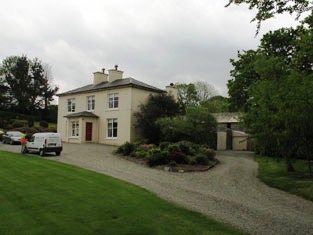
|
| Sion Cottage | At the time of Griffith's Valuation, John Levis was leasing this property to Eliza Townsend when it was valued at £8 5s. This may be Eliza Hungerford, who was married to Rev. Richard Boyle Townsend. A building still exists at the site. | |
| Deelish House | At the time of Griffith's Valuation, Avisa Clarke was leasing this property to the Guardians of Skibbereen Poor Law Union as an auxiliary workhouse. It was then valued at £8. It is still extant and in use. |
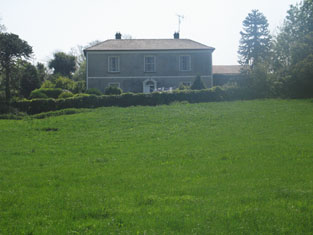
|
| Deelish House | John Gallway was leasing this property to Henry Marmion at the time of Griffith's Valuation, when it was valued at £12. It is still extant. |
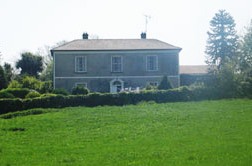
|
| Betsborough | At the time of Griffith's Valuation, Adam Newman was leasing this property to Henry Newman, when it was valued at £19 5s. It is still extant. Family history records for the Sweetnam family indicate that Samuel Sweetnam took over Betsborough while Thomas Sweetnam was agent to the Newman estate. Henry Newman of Betsborough, Skibbereen, owned 877 acres in the 1870s. | |
| Lurriga House | Rev. Maurice Townsend was leasing this property to Rev. Richard Wright at the time of Griffith's Valuation, when it was valued at £27. The house is almost completely gone though some ruins remain. | |
| Lurriga Mill | James H. Swanton was leasing this property from Rev. Richard Wright at the time of Griffith's Valuation. It included a house valued at £8 10s and a mill valued at £88. In 1906 the representatives of Timothy M. Downing owned the property, then valued at £8. The house no longer exists but there are still buildings at the mill site. | |
| Glencurragh | Rev. Maurice Townsend was leasing this property to Daniel McCarthy at the time of Griffith's Valuation, when it was valued at £19 15s. It does not appear on the 1st edition Ordnance Map but is labelled as Glencurragh on the later 25-inch map. A house remains at the site though substantial modern development has taken place in the area. |
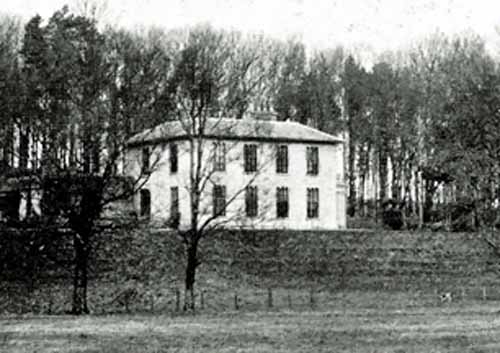
|
| Rosebank | Thomas Marmion was leasing this property to Avisa Clarke at the time of Griffith's Valuation, when it was valued at £11 10s. The house at this site is labelled Russagh Cottage on the 1st edition Ordnance Survey map but as Rosebank on the 25-inch map of the 1890s.The National Inventory of Architectural Heritage states that the current house was built by the O'Donovan family in the 1860s as a dower house for Liss Ard House nearby. It is still extant and occupied. |
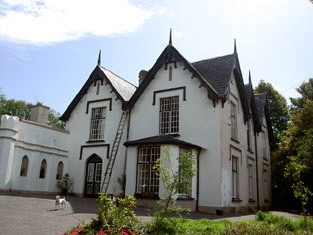
|
| Carriganear | At the time of Griffith's Valuation, John Beecher held a property at Maulbrack in fee and valued at £10 5s. This seems to be Carriganear House, mentioned by Lewis in 1837 as the residence of Mrs. Evans. There is still an extant house at the site. | |
| Glen | Rev. Edward Spring was leasing this property from Sir H. Beecher at the time of Griffith's Valuation, when it was valued at £6. Cape Clear Island Youth Hostel's website indicates that it was originally the coastguard station and later occupied by Rev. Edward Spring as he tried to establish a protestant congregation on the island. In 1906 Sir John Becher owned a property valued at £10 at Glen East. |

|
| Greenpark | James Callaghan was leasing this property to Matthew Sweetman at the time of Griffith's Valuation, when it was valued at £9 15s. In 1837 Lewis refers to "Greenpark" as the seat of John Gallway. A building still exists at the site. | |
| Westfield | At the time of Griffith's Valuation, Margaret Long was leasing this property to Rev. John Coppinger when it was valued at £13 15s. The house is still extant and occupied. |
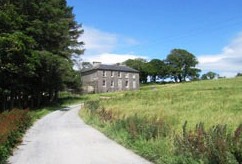
|
| Whitehall | Edward Townsend held this property in fee at the time of Griffith's Valuation, when it was valued at £22. Lewis noted it as the residence of S. Townsend in 1837. In 1906 it was owned by the representatives of Samuel R. Townsend and valued at £21. Bence-Jones indicates that it later became the property of the Alleyne family. The Irish Tourist Association reported in the early 1940s that it was still occupied at that time. |

|
| Marsh House | Robert Tighe was leasing this property to William Jago at the time of Griffith's Valuation, when it was valued at £14 5s. A house is still extant at the site. | |
| Mohanagh Lodge | Andrew McGill was leasing this property from Lady Carbery's estate at the time of Griffith's Valuation, when it was valued at £10 15s. In 1814 Leet referred to it as the seat of Richard Marmion. A house still exists at the site, | |
| Springville | Thomas S. Fleming was leasing this property to Richard Long at the time of Griffith's Valuation, when it was valued at £7 15s. A house is still extant at the site. | |
| New Court | At the time of Griffith's Valuation, Lionel Fleming held this property in fee, when it was valued at £22. Both Lewis, in 1837, and Leet in 1814, noted it as the seat of Beecher Fleming. It is shown on Taylor and Skinner's 1783 map apparently the residence of a Tonson family and Wilson refers to it as a seat of Lord Riversdale in 1786. It was owned by the representatives of Beecher Fleming in 1906 when it was valued at £28 5s. In the early 1940s the Irish Tourist Association survey mentions that it was occupied by a Trinder family. Bence-Jones notes that this house is now demolished though a farm exists at the site. | |
| Lough Hyne House (Cottage) | Jane Matthews was leasing this property from Lady Carbery's estate at the time of Griffith's Valuation, when it was valued at £16 5s. Lewis indicated that in 1837 it was the seat of D. McCarty. It was labelled as Lough Hyne Cottage on the 1st edition 6-inch Ordnance Map but on the later 25-inch edition is labelled Lough Hyne House. The National Inventory of Architectural Heritage suggests it was originally built as a sporting lodge. The property is still extant and used as holiday accommodation. |
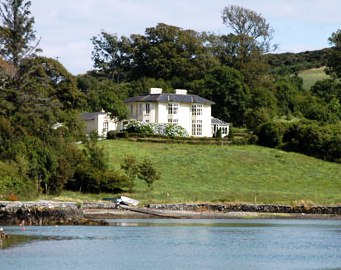
|
| Creagh House | Wilson, writing in 1786, refers to Cree as the seat of John Becher. At the time of Griffith's Valuation, Sir H. Becher was in possession of Creagh House, then valued at £25. In 1894 and 1906 it was owned by Sir John W. Becher and valued at £30 15s. It is still extant and the well-known gardens are sometimes open to the public. |

|
| Oldcourt House | Martin Jennings was leasing Old Court from the Becher estate at the time of Griffith's Valuation when it was valued at 15 15s. Referred to by Leet as the seat of Michael Galway in 1814. It is still extant. |

|
| Highfield | John Daly was leasing this property from Robert D. Beamish at the time of Griffith's Valuation, when it was valued at almost £9. Farm buildings exist at the site now known as Highacres. | |
| Inane | At the time of Griffith's Valuation, Rev. Richard Marmion was leasing this property to Thomas Long when it was valued at £16 5s. Noted by Lewis as the seat of H. Marmion in 1837, it is labelled Inane on both the 1st-edition and 25-inch Ordnance Survey maps. There is still an extant house at this site. A smaller property in the same townland, labelled Inane Cottage [W042286], was leased by Patience Marmion from Samuel Townsend in 1853, when it was valued at almost £4. A house still exists at this site also. | |
| Baltimore House | Jane Freke was leasing this property from Lady Carbery's estate at the time of Griffith's Valuation, when it was valued at £12 10s. Lewis notes Baltimore Castle as the residence of Mrs. Freke in 1837. The building labelled Baltimore House on the 1st and 25-inch edition Ordnance Survey maps is still extant. Baltimore Castle is an older, seventeenth century building which has recently been restored. |

|
| Castle House (Baltimore) | William Cuthbert was leasing this property from Lady Carbery's estate at the time of Griffith's Valuation, when it was valued at £12 5s. In 1837 Lewis noted Baltimore House as the seat of Jno. Collins. This house is no longer extant and modern buildings occupy the site. | |
| Lough Hyne Cottage (Becher) | This property was held in fee as part of Sir. Henry Becher's estate at the time of Griffith's Valuation, when it was valued at £7 15s. It is described in the valuation as a "caretakers house". Labelled as "Lough Hyne Cottage" on the 1st edition Ordance Map, it is not shown on the later 25" Map. Another Lough Hyne Cottage is marked in the townland of Ballyisland on the opposite shore of Lough Hyne. On the later map this is labelled Lough Hyne House. | |
| Bunalunn or Mount Music | At the time of Griffith's Valuation, Rev. Richard Webb was leasing this property from Col. Clarke's estate, when it was valued at £10. Lewis had noted it as the seat of R.F. Webb. Leet refers to it as the seat of Alex O'Driscoll in 1814. In 1906 Capt. Anthony Morgan was the owner of this property, then valued at £26 5s. The house is named Mount Music on the 1st edition Ordnance Survey map but as Bunalunn on the 25-inch edition of the 1890s. AS Mount Music it gave its name to a novel by the celebrated Anglo-Irish writers, Somerville and Ross. The house is still extant and was offered for sale in recent years. | |
| Dromore Cottage | Daniel Welply held this property in fee at the time of Griffith's Valuation, when it was valued at £5. It is labelled Dromore Cottage on the 25-inch Ordnance map of the 1890s. It is still extant and occupied. |

|
| Aghadown House | At the time of Griffith's Valuation, Aghadown House, owned by William Jago, was unoccupied and valued at £8. Lewis had noted Aghadown as the seat of H. Becher in 1837. [The 25" Ordnance Map shows a second house, also called at Aghadown House, at W049334] The original Aghadown House is shown on Taylor and Skinner's 1783 map as a seat of the Banfield family and Wilson refers to it as the seat of "Benjamin Bonsfield" in 1786. In the early 1940s the Irish Tourist Association survey noted that "of this mansion, one ivy-covered gable and the gazebo remain". The National Inventory of Architectural Heritage notes that the extant building may previously have been the steward's house when the original house was still occupied. |

|
| Gortnascreeny House | Lewis notes Gortnascree House, parish of Caheragh, as the residence of A. O'Driscoll in 1837. At the time of Griffith's Valuation the property was being leased by Thomas Goggin from the Becher estate and had a value of £4 10s, In 1906, a property valued at £10 and owned by Sir John Becher was reported at "Gortnadrohid" but there is no townland with this name in Caheragh parish. There is still an extant house at this site. | |
| Greenmount House | Daniel Connor was leasing this property to Thomas Atridge at the time of Griffith's Valuation, when it was valued at almost £9 and stood on a holding of 300 acres. In 1837 Lewis recorded Greenmount as the seat of Captain Long but in 1814 Leet refers to it as the seat of Thomas Atbridge [sic]. There is still a house at this site, undergoing renovation in 2009. |
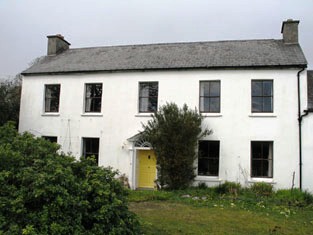
|
| Roaring Water Cottage | At the time of Griffith's Valuation, John F. Townsend was leasing this property to Frances Long, when it was valued at £8. Lewis mentions Roaring Water House as the residence of J. O'Sullivan in 1837. The house is still extant and occupied. | |
| Ardogeena House | At the time of Griffith's Valuation, Richard T. Evanson was leasing this property to Florence McCarthy when it was valued at £10. In 1837, Lewis noted the house as the seat of R.T. Evanson. It is still extant and occupied. |

|
| Carrigboy | At the time of Griffith's Valuation, Rev. Alleyn Evanson was leasing this property to John Sullivan when it was valued at almost £8. In 1906 it was owned by Hanora Harding and valued at £17 15s. | |
| Four Mile Water Court or Durrus Court | Rev. Alleyn Evanson was leasing this property from the Earl of Bandon's estate at the time of Griffith's Valuation, when it was valued at £15. It is labelled Four Mile Water Court on the 1st edition Ordnance Map and Durrus Court on the later 25-inch edition. In 1837, Lewis recorded it as Four Mile Water Court, the seat of A. Evanson. It is still extant. | |
| Durrus Glebe | Rev. James Freke was leasing this property from the Ecclesiastical Commissioners at the time of Griffith's Valuation when it was valued at £20. Lewis records it as the residence of Rev. Alcock in 1837. The house is still extant and occupied. |
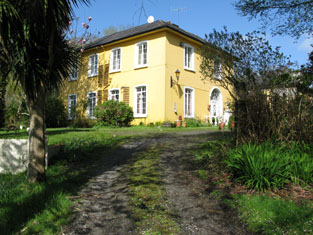
|
| Blair's Cove | At the time of Griffith's Valuation, this property was held in fee by Richard L. Blair and valued at £20. In 1837 Lewis had noted it as the seat of R.L. Blair. Leet refers to it as the seat of Cornelius O' Connor in 1814. It was offered for sale, as part of the Blair estate sale, in April 1866 when it was noted that "with judicious outlay in repairs it might be rendered very comfortable". The house is still extant and now houses a restaurant and luxury accommodation. See www.blairscove.ie |

|
| Friendly Cove | Richard T. Evanson was leasing this property from John B. Gumbleton at the time of Griffith's Valuation, when it was valued at £24. Stores adjoining the property were valued at £6. Leet records this property as the residence of Nathaniel Evanson, jnr. in 1814. The house is still extant and in 2009 was offered for sale. |
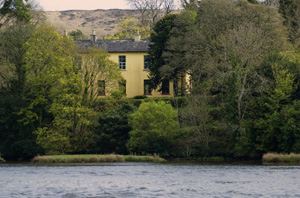
|
| Fort Lodge | John B. Gumbleton was leasing this property to Richard Donovan at the time of Griffith's Valuation, when it was valued at £7. In 1837 Lewis noted it as the seat of R. O'Donovan. It is now in ruins. | |
| Toormore Cottage | Rev. William Fisher held this property in fee at the time of Griffith's Valuation, when it was valued at £12 10s. Lewis had recorded it as the seat of J. Baillie in 1837. | |
| O'Donovan's Cove | Timothy O'Donovan held this property in fee at the time of Griffith's Valuation, when it was valued at £12. Lewis recorded it as the seat of T.O'Donovan in 1837. It is described as "in ruins" on the 25-inch map of the 1890s and no trace remains now. | |
| Ardmanagh House | John Limerick was leasing this property to Thomas Nicholls at the time of Griffith's Valuation when it was valued at £10. Substantial modern building has taken place in the area. | |
| Rock Cottage (Skull) | James O'Callaghan was leasing Rock Cottage from the Earl of Bandon's estate at the time of Griffith's Valuation, when it was valued at £11. In 1837 Lewis had recorded it as the residence of J. O'Callaghan. James O'Callaghan owned over 450 acres in the area in the 1870s. Operated as a guesthouse in the later twentieth century and offered for sale in 2009. |

|
| Cappagh House (Skull) | Thomas S. Cave held this property in fee at the time of Griffith's Valuation, when it was valued at £20. Named as Cappagh House on the 1st edition Ordnance Map but not shown on the later 25-inch map. |
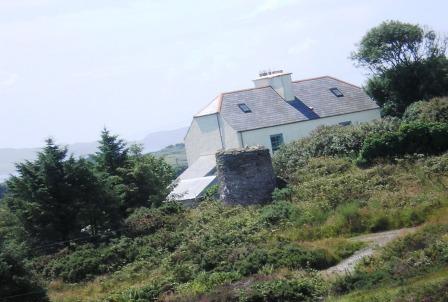
|
| Seafort | Mountifort Longfield was leasing this property to Stephen Browne at the time of Griffith's Valuation, when it was valued at £9 10s. May possibly have been owned by William Hull in 1814. In 1894, Slater refers to it as a residence of Mountifort Longfield. The house is still extant, together with extensive farm buildings. |

|
| Dunbeacon House | Richard Townsend held this property in fee at the time of Griffith's Valuation, when it was valued at £11 5s. In 1906 it was also the property of Richard Townsend and valued at £8. | |
| Rickfield Cottage (Skull) | Hugh Swanton was leasing this property from the Connor estate at the time of Griffith's Valuation, when it was valued at £5. Buildings are still extant at the site. | |
| Rickfield (Skull) | At the time of Griffith's Valuation, Robert Swanton was leasing this property from the Connor estate when it was valued at £6 5s There are still buildings at the site. | |
| Leamcon House | At the time of Griffith's Valuation, William Hull held this property in fee when it was valued at £20. It had also been noted by Lewis as the seat of the Hull family in 1837. In 1814 it was the residence of R.E. Hull. The 1st-edition Ordnance Map also indicates the site of Old Leamcon House as well as a defensive battery. Leamcon House is still extant and occupied. |
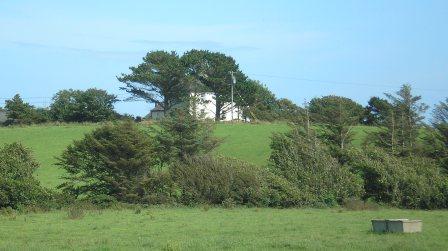
|
| Lissacaha Cottage | Phillip Somerville held this property in fee at the time of Griffith's Valuation, when it was valued at £12 10s. It is labelled "Lissacaha Cottage" on the 1st edition Ordnance Map but has become "Prairie Cottage" on the later 25-inch map. In 1906 it was owned by Thomas Phillip Somerville and valued at £15 5s. It is no longer extant. | |
| Meenvane | John Limerick was leasing a property to Nathaniel Lannon (?) at the time of Griffith's Valuation, when it was vaued at £13. This property appears to have been situated on the main street in the village of Skull. | |
| Horse Island | At the time of Griffith's Valuation, Thomas Cave is recorded as holding a house in fee valued at £10 at Horse Island. No house is labelled on the 1st-edition Ordnance Map. The island was notable for its concentration of copper mines. | |
| Lowertown Corn Stores | Daniel McCarthy was leasing a building described as "corn stores" from the Hull estate at the time of Griffith's Valuation, when it was valued at £10. It is not evident on the 25-inch map of the 1890s. | |
| Dunnamark House | Leased by Alicia Tisdall from Samuel Hutchins at the time of Griffith's Valuation, when it was valued at £8 5s. In the 1940s the Irish Tourist Association survey noted that it was the residence of Dr. Nunan. There is still an extant house at the site. | |
| Dunnamark Mill | Michael Murphy was leasing this property, including a mill, from the Kenmare estate in 1852, when it was valued at £35. The building is labelled Barytes Mill on the 25-inch Ordnance Survey map of the 1890s. It is now a ruin. | |
| Newtown (Bantry) | Held in fee by the Earl of Kenmare's estate in 1852 when it was valued at £8 5s. Lewis refers to it as the seat of M. Murphy in 1837. There is still an extant house at the site. | |
| Ivy Cottage (Bantry) | Jeremiah O'Connell was leasing this property from Robert E. White at the time of Griffith's Valuation, when it was valued at £24. A substantial farmyard was located nearby. By the later nineteenth century the house appears to have been known as Beach Cottage. A slightly later building, known as Ardeevin House, exists at this site now. |

|
| Caherdaniel House (Bantry) | Leased from the Bantry estate by John Cotter at the time of Griffith's Valuation, when it was valued at almost £9. Occupied buildings still survive at the site. | |
| The Vicarage (Bantry) | Rev. John Murphy was leasing the Vicarage from the Bantry estate at the time of Griffith's Valuation, when it was valued at almost £21. The house is still extant and occupied. |

|
| Bantry House | Bantry House was held in fee by the Earl of Bantry at the time of Griffith's Valuation, when it was valued at £125. The house history indicates it has been the home of the White family since about 1765 when Richard White purchased what was then Blackrock House. Wilson still refers to it by the latter name in 1786 but it is named Bantry House on the 1st edition Ordnance Survey map of the 1830s. The Irish Tourist Association survey of the 1940s contains a detailed description of the house's interior at that time. Bantry House has been open to the public since 1946 and a prestigous music festival is held there each summer. For more information see www.bantryhouse.com. |

|
| Trawnahaha | Elizabeth Vickery was leasing this property on Whiddy Island from the Earl of Bantry's estate in 1852 when it was valued at £14. It is not named on the 1st edition OS map and the grid reference is approximate. | |
| Inish Beg House | Originally a summer retreat but eventually completed by the McCarthy-Morrogh family as a house in 1899. Inish Beg Estate now provides luxury holiday accommodation. |
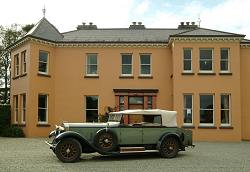
|
| Derreeny House | This property was built sometime after the 1st edition Ordnance map was published. In the 1850s Samuel Townsend held a property in fee at Derreeny, valued at £6 10s. Labelled Derreeny House on the 25-inch Ordnance Survey map, it is still extant and occupied. |
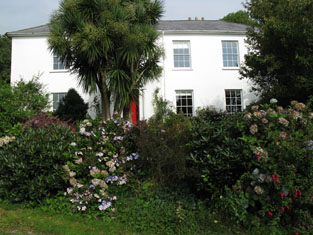
|
| Derreennatra Manor | This house does not appear on the 1st edition Ordnance Survey map nor is it recorded in Griffith's Valuation when the surrounding property was owned by Dr. Thomas Hicks. It is labelled Derreennatra Manor on the 25-inch map of the 1890s. A house still exists at the site. | |
| Killeena | Rev. John Wright was leasing this property from the Beecher estate at the time of Griffith's Valuation when it was valued at £9. It is labelled as Killeena on the 1st edition Ordnance Survey map but is described as "in ruins" on the later 25-inch edition of the 1890s. Modern holiday accommodation exists at the site now. | |
| Thornhill House | Wilson, writing in 1786, refers to Thornhill as the seat of Mr. Townsend. Two prooerties are shown in the townland of Derreendangan on the 1st edition Ordnance Survey map of the 1830s. One, Thornhill House, is described as "in ruins" while the other property, Thornhill Cottage, is located nearby. The townland was part of the estate of Thomas Uniacke at the time of Griffith's Valuation. The 25-inch map of the 1890s indicates Thornhill House again in use and there is a still a substantial farm at this site. Thornhill Cottage is no longer extant. |

